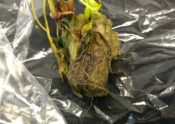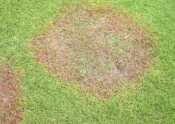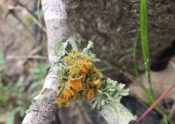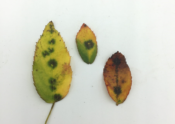
Blog article #1 by Kevin Pineda (for partial fulfillment of BESC 484 requirement) Not all evidence of a plant pathogen can be seen above the surface. Phytophthora root rot caused by Phytophthora sp. is the most common cause of root rot. This rot of the root system hinders the ability of the host plant to take up water and nutrients. Below the surface, it can be observed as discoloration and decay of the roots. Phytophthora has a cell wall made of cellulose and is classified as an oomycete,… Read More →






